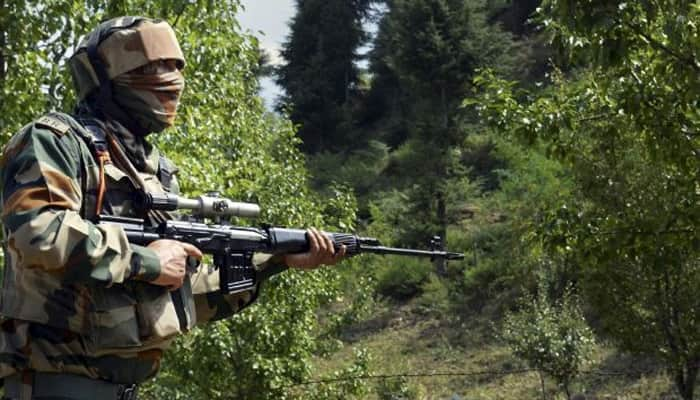New Delhi: Two days after the Indian Army, in coordination with the Air Force, carried out a surgical strike inside Myanmar, killing 38 insurgents, the Central government on Thursday sounded high security alert across Northeast after reports emerged that NSCN-K militants have entered the country for revenge attack.
The move came after a high-level meeting chaired by Home Minister Rajnath Singh and attended by Defence Minister Manohar Parrikar, NSA Ajit Doval, Vice Chief of Army Lt Gen Philip Campos among others where intelligence inputs were shared.
According to these inputs, around 20 militants belonging to NSCN-K, PLA, ULFA and other groups like the newly-formed United National Liberation Front of West South East Asia crossed the Indo-Myanmar border with the intention of revenge attacks after Tuesday's surgical strike by Army, sources privy to the discussion said.
The top security establishment took stock of the security situation in the entire northeastern region and the fall-out of the Army strike.
The government expressed "satisfaction" and may order similar strike in future if situation demands as the Tuesday morning Army operation was "successful", the sources said, as per PTI.
However, the government may exercise precaution taking into consideration the sensitivities involved with regard to Myanmar, where general election is due soon.
Sources said Doval, who will visit Myanmar soon, will brief the Myanmarese leadership about the circumstances leading to India taking the bold step of ordering surgical strike against militants operating from that country's soil.
There have been reports that India informed Myanmar about the Army's strike only after completion of the operation and that upset the Myanmar leadership.
However, government has been maintaining that Myanmar has been informed about the Army strike "along the border" well in advance.
The meeting also took note of the NSCN-K's attempt to target security forces since June 4 when militants killed 18 Army men in Chandel district of Manipur.
At least five such incidents of attempts to target security forces have taken place since June 4, the sources said.
The top security brass emphasised the need for both defensive and offensive steps to be taken in the wake of intelligence inputs that militants were desperate to carry out some spectacular attacks in the northeast.
In the first such cross-border operation, commandos of the Army on Tuesday engaged two separate groups of militants along the Indo-Myanmar border, inflicting significant casualties on them.
The ambush, which was one of the most deadly attacks in the region in recent years, occurred at around 8.30 am on June 4, when the Army's convoy was traveling between Paralong and Charong villages.
The Central government later handed over the probe into the attacks to the National Investigation Agency.
How did the entire operation of Indian Army unfold?
The surgical strike inside Myanmar was carried out by a crack team of about 70 commandos of the Indian Army who finished the operation within 40 minutes.
The decision of "hot pursuit" was taken hours after the Naga militants killed 18 soldiers in an ambush in Chandel area of Manipur on June 4 and clearance was obtained from Prime Minister Narendra Modi on the night of June 7, soon after his return from Bangladesh, said sources privy to the details.
The commandos of 21 Para, equipped with assault rifles, rocket launchers, grenades and night vision goggles, were air dropped at around 3 am on Tuesday from Dhruv helicopters, just inside the Indian territory near the border with Myanmar, security sources said.
Once on the ground, the contingent of the special forces split into two groups and headed for two camps being run by NSCN(K) and KYKL, who are believed to be responsible for the deadly ambush on June 4, they said.
The teams trekked through the thick jungles for at least five kilometers before they reached the training camps.
"Each of the two teams were further divided into two sub-groups. While one was responsible for the direct assault, the second formed an outer ring to prevent any of insurgents from running and escaping," the sources said, as per PTI.
The actual operation (hitting the camp and destroying it) took about 40 minutes. Not only did the commandos kill those present at the camps in gun fight, during which rocket launchers were also used, one of the camp was also set afire.
Sources, quoting ground reports, said 38 militants were killed and seven others were injured in the strike.
Thermal imagery was also used to track the operation about which Myanmarese authorities were kept in the loop, they said.
Army Chief Gen Dalbir Singh Suhag, who had postponed his trip to UK for the operation, was coordinating from the Army headquarters.
(With PTI inputs)

















